T-Rex A'La Mode
Sheepless in Seattle ... So many dweebs, so little time ... How to stop worrying and love the warps ...

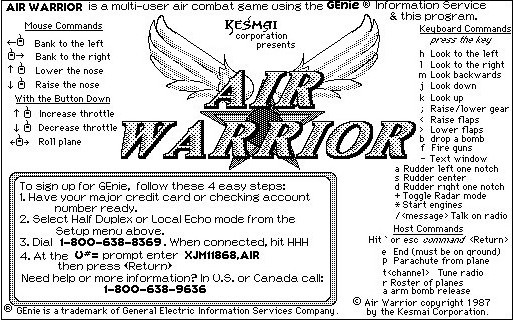
What follows are my recollections from 15 years of involvement and/or association with Air Warrior. At least as best as my memory can recall such things. My serious activity in the game was from 1987 through 1992, so much of this will be unfamiliar to most AW readers. And odds are I’ll get some of the chronology wrong. But screw it. “The game’s afoot,” as Holmes used to say.
The Early Daze
“Back in those days everything was simpler and more confused”
– Jim Morrison

I started playing Air Warrior in October of 1987. There had been a mention of it in MacWorld and, having always had a love for WW2 history, I decided to give it a try. Running a flight simulation on a 512x384 black-and-white 68000-powered Macintosh SE is not exactly what one would consider comfortable by today’s standards. Nor is flying by mouse (we didn’t need no steeeenking joysticks … and they didn’t exist anyway for the Mac yet). Frame rate could be measured without a second hand. It was like watching one of those old Buster Keaton movies … black and white, choppy, and there was much humor in what went on.
My first time flying - from old A3 - I must have died half a dozen times before getting wheels-up. Then I took off from elsewhere. Once I got into a fight I quickly realized that all the rules I’d learned from studying the historic conflict were meaningless. Standard practice on the head-on cross was to (a) drop flaps, (b) drop gear, (c) chop throttle, (d) fire head-on until, (e) you’re past and then crank a nice 80G “Bat Turn”. Whoever did this best usually won. Needless to say this was a bit of a shock, but I adapted and set about discovering this new world.
And it was a world with many, many flaws. Beyond the “dash of physics” flight model, where gravity was like traffic signs in Boston - seen but ignored, there was the fact that the host only held 30 or so planes, and only held them for an hour or two at best before projectile vomiting us back to GEnie. Time-of-flight wasn’t modeled, so you shot laser beams - with no convergence to worry about. There was no point using the vertical - there were no blackouts you could go round and round indefinitely without fear of crashing - and ammo was in abundance. Turn-n-burn, baby.
One of the first people I hooked up with was Airmigan. We’d sortie together from A3 and look for the shit. Kelton played back then - and was actually good at the game. Ridge Runner was top dog. Within a month or so Air and I ran into a couple guys coming from C-land way too often - Tango Circus (“TC”) and Pan. When the 4 of us met, only 1 or 2 would survive. It was then that I graduated from “Dweebtown USA” (back then, all new players were deposited in A-land) to C-Land and switched my handle from it’s original “Doctor Doom” to “DoKtor GonZo.”
Around this time Air Warrior got its first female pilot - or at least the first who’d admit it - or lie about it - whatever. “Lady In Red” was her handle and the effect on the sex-starved AW populace was vivid. You’d think it was a National Geographic documentary on the mating habit of the North American Nerd. She usually had half a dozen planes following her around. She hooked up with our first bomber maven … a fellow who went by “Garos.” She’d gun for him and they’d bomb stuff incessantly. Then they heard about one of the peculiarities I found in the B-25 and just about lived in that plane … except when they ran into me in my F/A-26.
The B-25 and B-17 back then each had their own specific flight characteristic which made them dangerous in the right hands. I found that the B-25 needed an incredibly short amount of runway to get airborne. So one day just for fun I took off in a B-25, at the end of the runway with wheels up and a little speed going for me, I pulled back full. The B-25 looped like a Zeke on steroids.Even though it had minimal pilot guns, when you had a good gunner the B-25 became very tough to bring down because it could out-loop most fighters and inflict damage from the gunner position.
The B-17’s unique trait was that with the auto-pilot on, flaps down 3/4, and the beast banked at around 45 degrees it could turn tighter than a Zero and just hold that pattern indefinately. This made it an ideal terror weapon at enemy fields (hence the name “Blood Dragon”). It was incredible to see one of these ships orbiting low over an enemy field. Defending fighters would rarely get airborne as the gunners cut them to shreds. Those that got off the ground quickly found that they couldn’t turn with the huge bomber and were quickly shot down.
The bugs we found in the game during those early months were hilarious. A few of the noteworthy ones include:
-
The “Inverted Stall-Climb” bug … in its earliest incarnation, the autopilot could be flicked on at any time and attitude. When it was on, though, it assumed gravity pointed towards “down” relative to the cockpit. The trick here was to roll your plane inverted and push the nose down (so it’d actually go up) until you stalled. At which point gravity was added to your upwards speed and you accelerated upwards. Planes could climb like V2’s using this.
-
The “Towed Bomber” bug … man a B17 with a couple of players as gunners. If the pilot now exits the bomber when it’s on the runway and comes back with a fighter, the B17 with gunners aboard is towed by the B17. Imagine a Spit with a B17 built in as a tail gunner. But it gets weirder. If the fighter turns too hard close to another fighter, the bomber can get “scrubbed off” onto that other plane.
-
The “Bombing PNG” bug … an infamous one, this. Go out on the runway in a loaded bomber. When other friendly planes appear, drop the bombers and then quickly exit the plane. The bombs kill the planes at the entry point and then the host decides that the planes actually killed each other, and marks then “Persona Non Grata” for killing a countryman. This was several weird behaviors (no minimum altitude on bomb drops, a delayed fuse on bombs, and then awarding kills from bombs to whoever is nearby) working together to create a great bug.
-
The “40K Twilight Zone” bug … the original flight code assumed no one would venture above 40,000 feet. Not really a bad assumption, all things considered. Well, in AW, eventually someone tried to see how high the plane could go and discovered that at 40,000 feet the engine model wraps around and behaves the plane was at sea level. There’s a sudden burst of acceleration from the engine, which is magnified by the thinner air at that altitude. Who knew that the Concorde flew in 1942? “But there’s more.” Why should just the engine model wrap around? When the speedometer wrapped around (thus exceeding what the assumed maximum forward velocity could be) the plane instantaneously started moving backwards. At 40,000 feet aspirated like sea level.
Despite all these problems, the game was just plain fun. It was only available during off-peak hours when GEnie turned their data centers over to GEnie to try to wring some money out of the hardware when corporate America was snarfing martinis. We’d log in at 6:01 PM on Friday and fly as close to non-stop until late Sunday night. We at dinner in front of the screen. We went to the bathroom during climbout. The host only held about 30 people; and only for a couple hours before crashing. With so few people in the air, everyone got to know each other very, very well.
I recall our first real serious dweeb who went by the handle of “DB” (we used to say “you can’t have a dweeb without ‘D’ ‘B’”). One day as a goof we told him that the planes dogfight better with the autopilot on. He believed us and died over and over and over until he realized what had happened. Then he started a squad known as the “Butt Kickers.” They should have been called the “Butt Kicked.” Man, they sucked. But DB was like a crop you tended. Any time you needed a few kills you just had to find out where he was flying. You didn’t want to kill him too often or he’d leave. You had to water him just right and not hack off too many branches at once.
The 4Q
“Love is a word that is constantly heard,
Hate is a word that is not.
Love, I am told, is more precious than gold.
Love, I have read, is hot.
But hate is the verb that to me is superb,
And Love but a drug on the mart.
Any kiddie in school can love like a fool,
But Hating, my boy, is an Art.”
– Ogden Nash
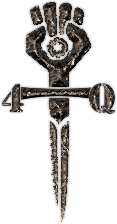
Myself, TC, Pan, and a few others quickly started flying together. We were all cut from the same cloth: troublemakers. The top pilot in C-land at the time was a fellow named “Nick Bigrod”, close behind him was someone whose ID and handle were both “715.” These guys were the first high-alt vultures. They’d cruise the perimeter and pick off strays - running up impressive scores. Our squadron was formed under the mantle of the “Bastard Squad.” This was a reference from a British sit-com called “The Young Ones.” It seemed a decent name. The squad soon added players like Vermin, Cap’n Trips, Flush Garden, Petie II, Renegade, Nestor, and Bar Fly. All trouble-makers.
It was a pretty interesting bunch. TC had a close relative who had flown for the AVG in China; Trips was one of the few people in the world who could loop an RC helicopter; and Flush flew A7’s off the Midway in Viet Nam and had been a Navy flight instructor before leaving the service and then flying for TWA.
One of the things to gain us notoriety was our long-range patrols. We knew that the fledgling dweebs were practicing at the rearward fields, and that they not only felt safe there, but also weren’t bright enough to recognize friend from foe. In addition, I found that the Me109K was un-catchable once it hit 10,000 feet. Unless you were above it already, you weren’t going to make it. And it climbed like a raped ape up to that height. Most people didn’t use the plane as it didn’t turn like a Spit - but we were hunting defenseless dweebs, who cared about turning?
So we’d sortie from one of our rearward fields in a pack of 3-6 109K’s - climb to around 15K - and head West for the sheep-ladened pastures of A-land. Most people were so wrapped up in the A3-B2-C1 furball that they didn’t pay attention to our dots on the radar map. And then we’d be on the first rearward field. One 109 would zoom down (there was no buffet back then) and pop the ack in one swipe. Usually the dweebs thought we were just practicing. Until they noticed the other planes coming in on them. Usually they’d try to take off a few more times before giving up. Then we’d climb to 10K and vanish. And hit the next field. And the next. We’d hit every rearward A and B field until we ended up in Northern C-land. This could take an hour or more, but everyone came back with kills.
(By the way, sheep jokes started in AW as a way to pass the time during length climb-outs.)
The A’s and B’s who had a few brain cells between them took a dislike to these antics and started trying to CAP the fields. But they were too often in the wrong place, and usually in Spits - which had no chance of catching a 109K. A few times they’d chase us “off the map”, assume we’d crashed, and then turn home. They didn’t realize that we were still there, only our icons had vanished. Lord that was fun - nothing like pillaging a field and then having 3 or 4 planes chase you all the way home - only to then get bounced by the rest of your squadron who’s lying in wait. In any event, the pattern for our squadron was now set. We were the “bad boys” - we pissed people off and they couldn’t do a thing about it because we were good enough to get away with it.
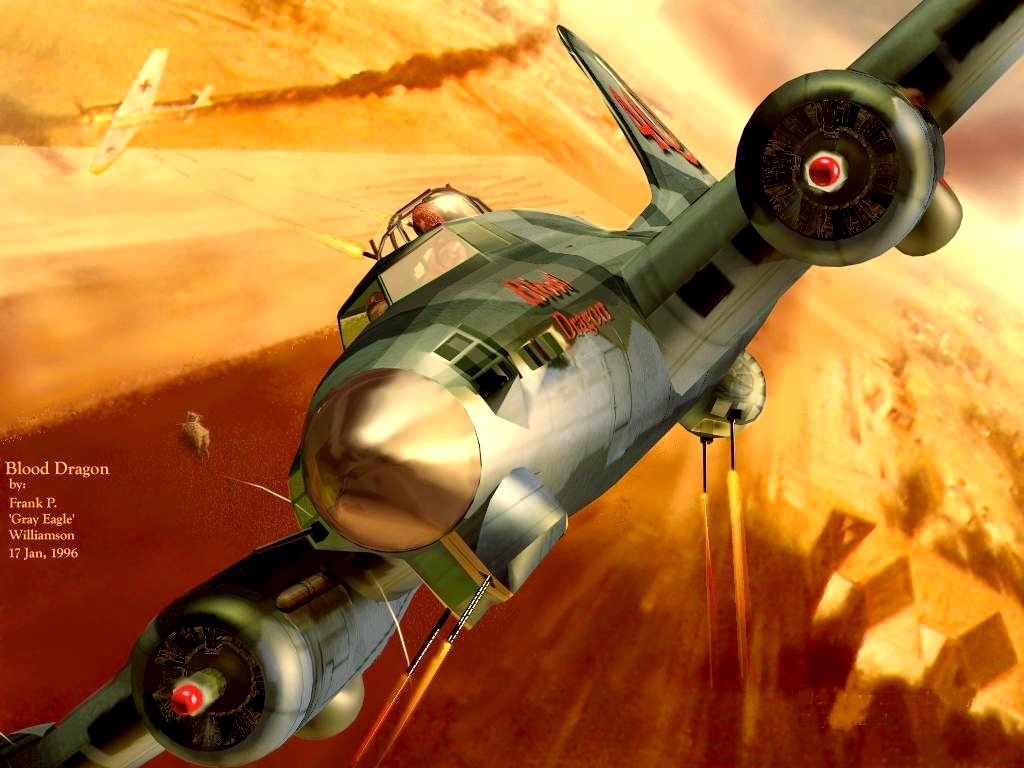
What sealed our mystique was the “Blood Pig” and “Blood Dragon.” These were A26’s and B17’s used as gunships. The B17 we’d orbit over an enemy field and let the gunners have at it. The A26’s we’d land behind the take-off spot and kill people as they appeared. I’ve chronicled these elsewhere on my site. Some Blood Pig missions the plane was so shot up it wouldn’t take off - we’d have to drive home. The Blood Dragon would stay aloft, but we were scraping the dirt. Which actually worked in our favor for a while as there was a bug where fighters couldn’t hit targets well firing down at them at all. So the enema fighters would try to get under us to shoot - and we were autopiloted at 10 feet. The gunners just needed one hit and they had a kill for themselves when the fighter crashed. Kesmai got tons of hate mail from people we savaged with this tactic. Which led to the introduction of more AAA at fields and player-controlled AA as well. Who says you can’t make a difference? ;-)
Shortly after that, more squadrons started forming, and they all got into the squadron “wings” on their handles. Some got pretty obnoxious. But they kept a theme of representing an acronym of the squadron name: “GF” for “Gunfighters” and so on. So, as a way to express our displeasure, the Bastard Squad’s wings were expressed as: “-=<4Q>=-“ … which only made sense when you said it. And so, the “4Q” were born.
The aforementioned GF’s provide an interesting tale. At the time they formed there were pretty much only two dominant squadrons: the 4Q and the Biggles’ “Flying Circus.” One of our squads unusually won a campaign; and each squad had between 8 and 12 pilots. The GF’s changed things when they built a squad of 16-20 pilots. They were winning by weight of numbers. Biggles and I realized that alone, we couldn’t beat them - there were only so many hours in a day and the GF’s had the numbers. So we merged our squads into an entity known as the “Spanish Inquisition” and thus began the first real showdown of Air Warrior.
The campaign of the SI v. GF’s was brutal. The GF’s tactic was to camp out high over the tri-country intersection and then pounce en masse on anything that looked vulnerable. And run from anything where the odds looked less than 2:1. This begat them a series of alternate interpretations on their squadron name including such gems as:
- Gumbiters
- Gerbil F*ckers
- 94th Parachute Runfighters
Biggles and I were on the phone a couple times a week discussing how to win the campaign, and comparing notes on the books we were each reading on air combat. Then we had a stroke of luck … an intelligence coup. One of my crew had a spare account and used it to listen in on the GF’s radio traffic for an hour or two. What he discovered was that (a) they were pretty rigidly organized and (b) their policy was to cover any wounded pilot. This provided me with the edge we needed. We changed out tactics to send a couple planes into their pack at high speed to inflict damage on one or two of the GF gaggle. This would in turn cause them to revert from offense to defense, and also disrupt their organization as the wingmen of the wounded now were effectively solo. Needless to say it worked; the SI won the campaign and, more importantly, regained dominance of the airspace.
This was actually a pretty significant evolution in many ways. First it was the first really organized conflict in the game. Prior to this squads just sort of evolved on their own - some did well, some didn’t, but squads were secondary to individual scores. Now there was a clear struggle for each campaign and squads were a more focal part of the game. Next, victory now depended on more than numbers and individual skill. Attacking the doctrine another squad followed was part of the equation. And, lastly, Hate was now in the Big Leagues.
There’s also an interesting footnote to the formation of the 4Q. At the time, the guy who ran the GEnie forums for AW was a fellow we lovingly nicknamed “Mullethead.” He was always giving my squad crap (and sometimes banning us) for things we said or did. At one point we renamed the squad to “The Banned” it got so insane. When me, TC, and Flush tried to set up accounts on the newly open AOL, we found something interesting. We couldn’t create accounts with the letters “4Q” in them. Or “Four Q.” Or just about any other combination worthwhile. Which made us suspicious. When we finally got logged in with normal sounding accounts, we went to the games forums and picked up where we left off from GEnie. And when we started getting crap from the AOL games guy, we were then told that he “had been warned we might show up.” By his brother - the games manager from GEnie … “Mullethead.”
The SysOaf’s at GEnie and AOL must have been so relieved when alt.games.warbirds started up and they were rid of us.
The DOS Dweebs
“Weather forecast for tonight: dark.”
– George Carlin

And so they came. Like a herd of blind, rutting mountain sheep. Bashing each other’s brains in with their brace of horns, making a spectacle of themselves. “Are we not Men? We are Dweeb-O’s!” Indeed, they were all “good at flight sims” … they had made Mega-Uber-General in Fighter Stud … their balls were cast iron and anodized.
And. They. Sucked.
One bunch, calling themselves the “527 Tactical Fighter Wing :: Aggressors” but known affectionately to as the “Regressors”, was certainly best of breed when it came to incest. Their mortality rate was worthy of declaring their ready room a biohazard. One night in particular they were clever enough to do their mission planning in the main General Conference room. Folks like myself and Mullah were, of course, listening. When they took off, there was a rodeo of enemy planes waiting to pounce. And pounce. And pounce. Aggies didn’t know have “quit” in their vocabulary (or many words with more than 1 syllable, actually) so they kept following The Plan even when they were getting shot down before getting their wheels up. It was glorious.
So glorious that I was moved to create some lyrics to celebrate the Aggie’s “contributions” to AW … and every opponent’s scores:
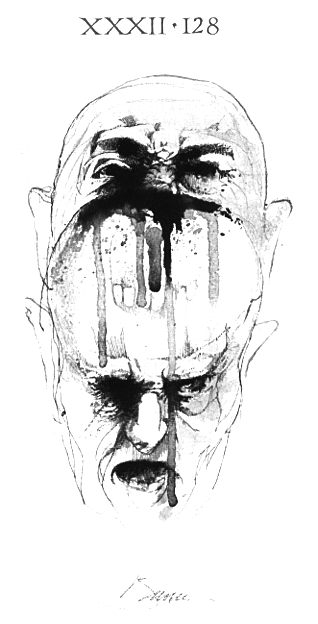
Comfortably Dumb
Hello? Is there anybody in there? Just nod if you can hear me. Is there anyone at home? There is no brain, they are Regressors A distant dweeb smoked on the horizon They are now launching planes in waves On chan-nel one we all hear what they're saying While C-land burns as if with fever They spend hours in the conference room I can't explain, you would not understand They jam up the private chan' Regressors have become comfortably dumb
Another Dweeb In The Hall (Part 2)
We don't need no education We don't need no flight control No dark sarcasm on the airwaves Mullah leave Regressors alone Hey Mullah leave us dweebs alone All in all we're just more dweebs in the hall All in all we're just more dweebs in the hall
The Eve Of Regression
The C-Land world It's over-flowin' Tempers flarin' Insults floatin' But ya - tell meeeeeee Over, and over, and over again, my friend Ya don't believe We're on the eve Of Regression Don't they understand What people are tryin' to say? And don't they realize That they die in every fray? When these dweebs takeoff They crash all over the place ... And ya - tell meeeeeee Over, and over, and over again, my friend Ya don't believe We're on the eve Of Regression
There was another time I recall that the Aggies sortied en masse in the old “atoll” terrain. Anvil and I were flying different countries then - I was in A, he in B. We had both seen the Aggies in a conference room, so we knew they were about to do something soon. We took off in our FW’s and climbed and got to positions where we could intercept. Suddenly there was an eruption of counters in the sector of the main C base. Anvil and I both headed there. We spotted each other at at 25K and had a quick exchange kind of like: “That you DoK?” … “Yeah, Anv” … “You going where I think you are?” … “Yup … feeding time.” So now you had an A and B FW flying as a pair. Which actually worked out because the Aggies (who were bright enough to look up) probably thought we were fighting and didn’t bother to worry about us.
We let them get airborne and away from the acks. They were struggling along at around 2000 ft … heavy with bombs … a mix of light bombers and P38’s. And down Anvil and I went. The odds were something like 12:2 and as I recall only 1 Aggie was able to limp back to base … because Anvil and I had run out of ammo after killing the other 11. We made sure each other was clear of any pursuers and then headed back to our respective bases. Salute.
But eventually even Aggies learned, and soon AW actually started to grow up. There were finally enough players to support concepts like flight training and organized (to the point of being reallllllly anal) squad nights. As with any War, eventually numbers and discipline were the way to win and for the few Untouchables left flying, it became harder and harder to find the pastures of old where the dweebs ran free and unguarded. The old names started to fade away.
Scenarios
“Between the idea And the reality Between the motion And the act Falls the Shadow” – T.S.Eliot
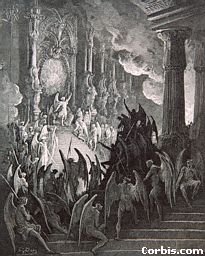
I guess my legacy to the genre is the scenario format. I’m not exactly sure how or where I got the idea; but it’s probably an offshoot from my years spent as a wargamer (miniatures, board games, etc.). Coming into an event with known objectives and a known order of battle was something I felt could work in the AW world.
The first few test missions were just that. Preset missions for an hour or so with only a couple dozen players. When we tried a 3-mission test, it all suddenly clicked. I could see the players adapting from one mission to the next. Tactics evolved with each mission. This was clearly not just an opportunity to create a new style of play, but also an opportunity to recreate the psychic environment of air combat: going into a mission setting and having to adapt your tactics and preconceptions to the reality that your faced with.
The first event was “Kursk.” None of us had any idea what to expect. We had never had this many players organized for anything online before. The mission was pretty simple … a horde of low-flying Russian attack bombers and fighters had to be stopped by a handful of German fighters. But finding the Soviets was the trick as we turned off tracking counters. And after finding them, actually diving into horrific odds and getting something meaningful done was the next trick. I vividly remember after one mission Grey Eagle, himself a Viet Nam vet, coming into the conference room where I was monitoring things and telling me his hands were shaking from the tension and excitement. That was when I knew I had found something special.
A couple of interesting things evidenced themselves during that first event. First, the normal arena squadron and country barriers faded away. Folks who were bitter enemies normally were now working together as if they’d known each other as friends for years. I saw this dynamic as a great way to help move what had become a rather clique-ish community to becoming more coherent. At every convention I went to, folks would tell me their favorite war stories from scenario missions. The things that went on in arenas blurred together, but those scenario missions always stood out. I could just image that these could easily have been the same kinds of conversations that real pilots have when meeting their adversaries, years after hostilities are over. In any case, it was clear that scenarios would change the AW community.
The next interesting thing was that scenarios provided the need for a new kind kind of expertise. Certain players emerged as role-players on a side. Grey Eagle, again, is a prime example. In the arena he was a loose cannon. In every scenario mission I saw him in, he was always the first to find the enemy formation. It was uncanny. So now we had folks who maybe never had a chance to shine in the arena finding that their other skills made them stars of scenarios. Flight leaders, planners, tacticians, scouts, bomber leaders, and so on. A whole new set of specialties.
And what was also incredible to see was the players apply the things they’d learned in scenarios back to the arena. Players who fought in scenarios came away more fearless as they were plunged into what would normally be considered “hopeless” situations and emerged (as often as not) victorious. They also had better SA as the scenario format had reduced visibility … your SA had to get better or you were dead.
In those early events there were only a small handful of tools. Basic settings, setting what planes were available, a few broadcast commands, and a huuuuuuuuuge host log which had to be filtered by hand. Thank gawd I had Emacs which let me write complex macros to extract the information I needed. My usual “GO! GO! GO!” command at the start of missions was done so for one reason: at the time all messages looked the same and everyone was yapping in the waiting rooms right up to launch time. The only hope I had for getting people in the air on time was to make sure they noticed the signal.
In the years that followed I did 11 more events, and had several more in the planning stages. I always designed jacket patches; but these rarely actually got produced (for financial reasons). What I had wanted was that at every convention, folks could wear their scenario patches as signs of accomplishment and to further the camaraderie: “You flew in Rabaul!? I was there too!”
The amount of time these events consumed was incredible. The mission design was easy. Once the event was announced there was at least an hour a nite handling the mailing lists and forums. About 2 or 3 hours per week was needed to manage the flight schedule - in one big honkin’ Excel spreadsheet. Once the missions began, it meant about 2 to 3 hours per mission for me to monitor things; followed by another hour of post-mission bickering; followed by 2 hours of poring over the logs and posting the official results. It was a huge time drain. But it was worth it.
Much has been made of my use of the concept of “Hate” in scenarios. A lot of people took it the wrong way … probably influenced by Dan Quayle and those ripping “Family Values” pitches. But I felt that to really capture the spirit of the time, it was important for the two sides to feel something visceral. For the missions to move them in their gut.
Accomplishing this required two things. First it required pitting two equally skilled sides against each other week after week. Just as in playoffs in professional sports, I was counting on the repeated encounters over the same battle ground to fire the player’s emotions. And it did. The second component was to raise the tension level by way of the mission design. Each side had to be aware that in a mission there were at most 2 or 3 opportunities to win. Missing them, or failing to execute on them, when they happened would be the difference. No battle of attrition here. Every shot could be the death blow.
By about 2/3 of the way into an event I could perceive a kind of “battle fatigue” setting in. Players showed up to play but many said they “didn’t really want to fly.” That all went away when the engines started, of course. And after the mission everyone was animated and chattering. But that reluctance to go back into the fray - because so much was on the line and each mission was so draining - was something I found rewarding. To actually bring the players that deep into the experience of an air campaign was beyond what I thought was possible.
And that’s the real story of “Hate.”
The Struggle
_ “It’s as clear as the balls on a tall dog.”
– Steven Tyler, Aerosmith_

Things between myself and Kesmai were never calm. It was their game, but for whatever reason I could see things in it that they couldn’t. Or wouldn’t. And I was relentless in my pursuit of what I knew to be Right. The end result was always positive - getting there was a pain. For all concerned. Yeah, this comes across as pretty arrogant, I know. But my skill and training was as a software engineer, and I’m the son of an engineer; so the ability to sniff out weird behavior in any kind of system has always been there for me.
One example of this was the “Amiga Negative Fuel Weight Bug.” For about 6 months, Amiga pilots had an incredible advantage over their Mac brethren. An Ami Fw190 could out-climb and out-turn a Mac Spit. At all altitudes. Combined with the Fw’s guns and armor, Mac pilots fell by the score. Kesmai, of course, denied a problem. They looked at the code and the performance tables were all fine. Yet the MacVictims knew for sure that there was something wrong. We flew the game every night, we could spot an Ami FW after one turn … and knew to either call for help or try to run.
What Kesmai discovered was that the flight tables were, in fact, correct. But the fuel on the Amiga front end was calculated as having negative weight. So the closer to a dry tank an Ami plane got, the more correct it’s behavior. Which also meant a loaded Amiga Fw was a very dangerous thing for a Mac pilot to encounter. Once Kesmai fixed this little problem, everything was fine.
Another case was the switch from 300-baud to 1200. For weeks and weeks and weeks I argued with Kelton that it had to be done. 300 baud limited what the gunnery model could handle, as well as just about every other aspect of the game - especially the fact that the sim flew in “half time” to provide enough bandwidth to do everything. Yes … the time scale was cut in half … a plane which climbed in real life at 3000 fpm behaved like it really climbed at 1500 fpm. The pain, the pain. Kelton knew it “should work” but he was reluctant to try because of his fear of what may break - he was, after all, depending on keeping AW to stay running to earn his living. Finally after my badgering him for at least three months he broke down and flipped the switch. To everyone’s delight and relief, things worked almost flawlessly. I recall there was a minor problem with gunnery which needed to be tweaked. The result was that AW was just about born-again. Having things take place in real time made it a whole new game.
Around this time there was kind of a falling out between Biggles and myself (and therefore my squad) - and this actually tells the true story of where “OiNk!” really came from. Bottom line was that Biggles and the Kesmai crew were pretty close and none of them appreciated my … uh … manner of getting things done. Didn’t matter if I was right; they took it as an insult. So eventually Biggles made a few verbal attacks on myself and my squad and departed for B-land. Now, if there was one thing the 4Q really loved it was having someone specific to channel their aggression towards. For whatever reason, Vermin and TC really got it in their minds to shoot Bigg’s down as often as possible. TC would cruise high over B-land’s main field calling Biggles out … “Yooooohooo, Piiiigggles.” And, as such, whenever they scored a kill on him in the “Great Piggles Hunt” they’d celebrate with a hearty: “OiNk!” Vermin would often punctuate it further with “burp.”
Turning Point
“Even if you are on the right track, you’ll get run over if you just sit there.”
– Will Rogers
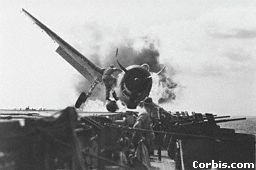
From my point of view, the turning point for AW was not the onset of WarBirds. It was the acquisition of Kesmai by NewsCorp. Blue Baron and I were ready to pull the trigger on bringing me into Kesmai as a consultant to build the “virtual Dok” on the back-end. So that the arena was a perpetual scenario. This system wasn’t just parceling out of missions at strategic targets; but there would be a real AI engine which would understand the difference in mission balance when the country was on offense versus defense. Likewise it would know to “produce” more AAA than replacement planes when on defense, and vice versa on offense. Scoring would have been based on mission success (including bonuses for people who led missions) instead of arbitrary kill ratios or weird points calculations.
There would have still been room for just “going up and finding a fight” … and there would have been plenty of bomber missions in tune with the current “Wartime” situation. It would have been grand.
When ole Rupert bought the store, all these plans folded. In fact, all plans seemed to go on hold and progress ground to a halt. WarBirds soon after went online and the community started to fracture. WB was a technically better product - having had the luxury of starting from scratch helped. And things we’d asked for repeatedly in AW sure enough found their way into WB. AW more or less stood still despite this new competition. Not that there weren’t improvements; but the game really needed a rewrite - to get rid of the baggage.
The AW community is what kept it alive as long as it lasted. BlueBaron and the other dedicated zealots knew that community is what keeps an online game alive. And they did everything they could in that regard. Even years later when I stopped by an AW Convention in Dallas, it was clear that the community was still cohesive, even though the game was showing obvious signs of age and decay.
The Many Names of DoK
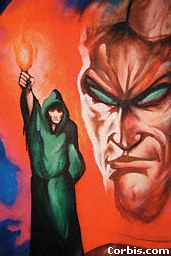
One of the things I always got a kick out of was coming up with handles that’d piss off the GEnie mind-control fascists. Or handles that were just fun. Folks could usually tell it was me if I was on a spare account simply by the handle. Some of my past favorites include:
- Heywood Jablomi
- Frank Rizzo (from The Jerky Boys)
- Phil McRevice
- Strange Brew
- Voodoo Chile
- Phil Latio
- Xavier Crement
- Fuller Schidtt
- IH8U2
- Biledriver
- Claude Balze
- Outlaw Josey Bails
- Falcon Icehole
- Focke Ewe
“Phil Latio” has special attachment. I used that when I won a bomber campaign … in a unique way. In this campaign, I never flew a bomber over 1500 feet, and never bombed a single strategic target. It was a Pacific campaign … in the old “Atoll” terrain. I was an “A” at the time, I recall and we were always outnumbered then. The B’s and C’s were fighting over the central islands constantly. My tactic was to launch an F/A-26 from the Southern-most field, climb to 1500 feet, and then cruise until I got feet wet towards the islands. Then I’d dive for the deck and hit WEP. First run I’d line up for the AAA. I’d use a technique used by nuclear attack bombers today called “Pitch Bombing.” Basically when the target crossed the top of my bombsight, I’d release the autopilot, pull back on the stick, and then kick loose the two sticks of bombs at the right moment as I started a loop.
The effect was that the atoll field had no radar warning of my approach (as I was so low) and I was coming in so fast that, unless they were waiting for me to the North, by the time they saw me I was pretty much vertical and starting to come of the top of the loop - the bombs were already away. Usually I’d be at the top of my loop when the acks would pop. Then I’d come screaming down and start dogfighting with the F/A-26. Naturally, folks used Zekes to defend the field - which blowed up real nice in front of F/A-26 guns. About 2/3 of the time I could knock down the defending fighters often enough to buy myself time to retreat.
Conventional wisdom would have me land back at base. But the A carrier was closer … and with meaner AAA. So I’d land my bomber on the flight deck. And then do it all over again.
Anyway, the funny thing wasn’t just winning the campaign. But when GEnie posted the announcement they realized a couple days after the fact what “Phil Latio” was and then pulled the award.
There has been a lot of myth and legend about how good I was or how bad I was. The real truth is I was always a mediocre 1-on-1 dogfighter - that whole “knife fight in the alley” metaphor never made it for me, and I never really got good at it. My edges always were, and are, situational awareness that increases with the number of planes in the air and a really incredible eye for angles. When flying with the 4Q my role was a a combination of AWACS and mobile reserve. I’d keep track of who in the squad was where and usually be able to sense from watching all the dancing dots when one of my guys was getting in too deep. At which point I’d nose the Wulf over and come to the rescue. Being able to keep track of 5 or 8 guys in 3 or 4 dogfights spread around the map was just something I found I could do. Likewise I could always spot the wounded (or brain dead) pidgeon in a flock. Just by watching how a dot moved I knew. And that’s where the angles came in … my knack was to set up my guns run to get that dweeb, and get him so that his wingman had no chance to counter, and hopefully I can snag another kill en my way off that guns run. I’d defer attacking until I saw the line up I wanted … which made some think I was afraid to attack … until they saw their wingman blow up in their faces as they were busy yapping on channel 1.
On the defense side of the equation, my SA usually let me know the moment things got out of control and it was time to get out of Dodge. Given that all we saw were dots in the distance and not much more until they were almost in vis range, I still am amazed how much I could read into watching these dots move around while in the middle of a fight. I used to check radar while looping, and send messages to the squad. In fact, I was generally less worried about the targets I had engaged, but the ones I knew would try to pile on if the fight lasted too long.
The bottom line was that I always played to my strengths. The bigger the furball I saw, the bigger my advantage. The worse the odds were against the enemy group I was about to attack, the bigger my actual advantage because none of those 4 or 5 guys knew which was my real target - and most half thought it wasn’t them - especially when the odds were in their favor. And all this played into my mystique - of coming out of nowhere at incredible speed, killing 2 or 3 in a pass (about a quarter of the time while they were chasing one of my wounded squaddies home to base), and then vanishing.
Epitaph
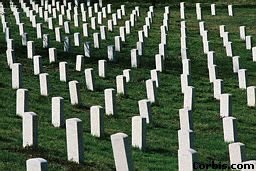
In the end, Air Warrior had to go. It ceased to evolve fast enough to keep up, it never really made enough money, and EA had no real clue what they had bought. Every once in a while BB and I meet up or talk and can’t help but marvel what we watched grow in front of us and around us. The folks I met in AW have ended up becoming some of the longest lasting friendships I’ve had. I’ve gone into business with a few even. Bottom line is that AW changed my life (it also messed up my credit cards for half a decade).
What I always find shocking when BB and I talk is the realization that there are probably only a handful of people who really understand how to make an online community thrive. BB and I are two of them. And there are all these companies dumping money trying to cash in on online gaming. And our knowledge came the hard way. We Were There when the genre of online multiplayer sim-gaming stuck it’s head out of the womb and belched.
My last really clear memory of AW was years and years ago. I think I was flying with HiTech (or maybe it was with Verm or Etoile) and we were cruising over that central valley (in the post-Iron Bottom Sound terrain) after doinking someone (Dweebgloss?) at high altitude. I was at my usual 25K in a FW. DeadDuck was mouthing off on channel 1. What else is new? I spotted a lone P-38 at around 12K off my left wing - it was just sort of plowing along. Wing-over and bore in at max speed so I end up slightly below him and make the guns run heading up to him … so he’s totally blind. DD made one more transmission before:
2050: A kill has been recorded.
5940: Har! OiNk! 4Q! Burp!
